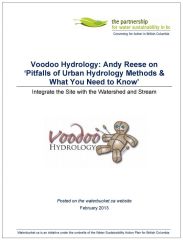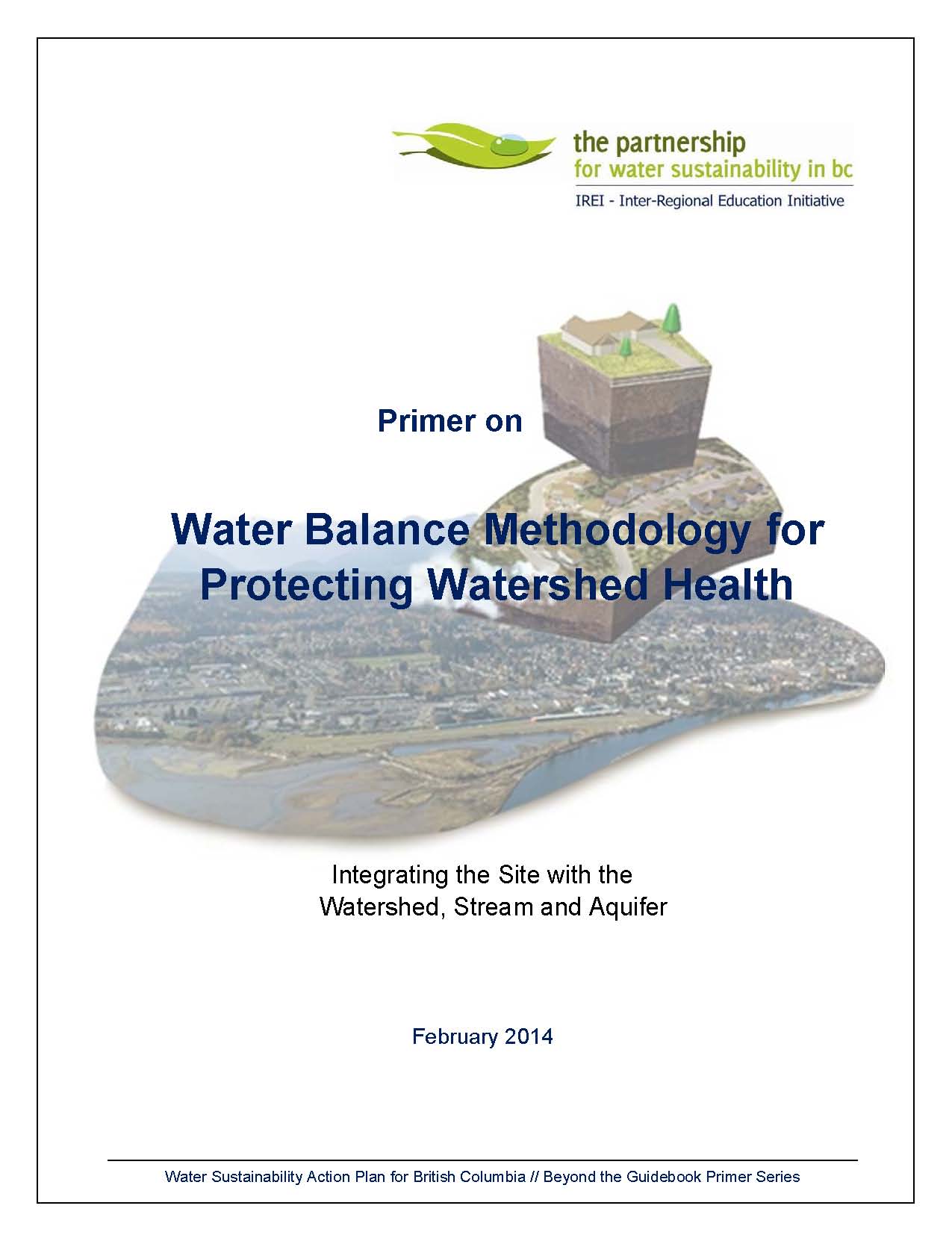DOWNLOAD: Voodoo Hydrology Explained (2006) – “The rise of Green Infrastructure and Resilience Planning opens the door for newer Voodoo like never before,” stated Andy Reese, water resources engineer and author, in 2016 webinar
Note to Reader:
Andy Reese coined the term Voodoo Hydrology in 2006 to describe the misapplication of science that characterizes drainage engineering and stormwater management practice.
 He is a prominent and popular American water resources engineer, writer, speaker, and textbook author.
He is a prominent and popular American water resources engineer, writer, speaker, and textbook author.
Since February 2013, he has delivered an annual webinar for Forester University titled Voodoo Hydrology – Pitfalls of Urban Hydrology Methods & What You Need to Know.
Should We Trust the Results of Commonly Applied Methodologies?
Protection of watershed health starts with an understanding of how water gets to a stream from individual sites, how long it takes, and whether there are impacts along the way.
A lesson learned is: avoid the pitfalls of Voodoo Hydrology!
An Inexact Science
According to Andy Reese, “My old friend Dr. Tom Debo, late of Georgia Tech and co-author of our textbook Municipal Stormwater Management, is fond of saying,
‘I love urban hydrology. They can never prove you are wrong, only inconsistent.’
“As a stormwater community, we have for years relied upon common urban stormwater hydrologic design methodologies and trusted their results. But, should we?”
Andy Reese cautions that: “We must understand that urban hydrology, including newer Green Infrastructure sizing approaches, as commonly practiced, is an inexact science where we are simply trying to get close to the right answer.”
“We are dealing with probabilities and risk, a changing land-use environment, and many real-world factors that can alter the answer. The applications we may encounter can vary radically.”
Recognize the Unstated Assumptions
“To ensure proper application, it is essential to understand the inner workings of the black box (maybe black magic) and unstated assumptions inherent in urban stormwater hydrology that we commonly use (e.g., computer packages).”
“Perhaps, if we make enough estimates of enough factors, the errors in estimation, high and low, will average out to the right answer. This is where voodoo really comes in handy.”
“The good news is that, as Dr. Tom Debo says, ‘Who can prove you are wrong?’ Well, the Omniscient Being can, but is probably busy elsewhere.”
“The rise of Green Infrastructure and Resilience Planning opens the door for newer Voodoo like never before,” concludes Andy Reese.
Voodoo: Magical practice considered to be a form of black magic, but also considered a religion to some
In the July/August 2006 issue of Stormwater Magazine, Andy Reese offered his perspective on urban hydrologic practice.
His article is about understanding some of the basics of methods drainage designers have taken for granted for years. In this regard, the article serves as an especially relevant Primer on contemporary practices.
The article points out some of the methodologies that can be used to obtain any number of “correct” answers.
 “This is the spirit of the Andy Reese article in being provocative, as contrasted with a technical compilation of current and acceptable state of the practice,” states Kim Stephens, Executive Director, Partnership for Water Sustainability in BC.
“This is the spirit of the Andy Reese article in being provocative, as contrasted with a technical compilation of current and acceptable state of the practice,” states Kim Stephens, Executive Director, Partnership for Water Sustainability in BC.
“The article is standing the test of time. It is as relevant today as when it was published in 2006.”
To Learn More:
 Download Voodoo Hydrology: Andy Reese on ‘Pitfalls of Urban Hydrology Methods & What You Need to Know’ to read a PDF copy of a story posted on the waterbucket.ca website in 2013.
Download Voodoo Hydrology: Andy Reese on ‘Pitfalls of Urban Hydrology Methods & What You Need to Know’ to read a PDF copy of a story posted on the waterbucket.ca website in 2013.
Extracts from Voodoo Hydrology are presented in this front-end to the article in order to whet the appetite of the reader to learn more. These extracts also provide context for a pragmatic and holistic approach that has been evolving in British Columbia.
The web story is complete with a copy of the 2006 article by Andy Reese.
Why We Need to Look at a Watershed as a Whole System
 “We need to look at the watershed as a whole, the flow paths and timing of flow, the total mass balance and effects of change before beginning to examine the design of mitigation strategies,” notes Jim Dumont in adding his voice of experience to that of Andy Reese. Jim Dumont is the Engineering Applications Authority for the Partnership for Water Sustainability in British Columbia.
“We need to look at the watershed as a whole, the flow paths and timing of flow, the total mass balance and effects of change before beginning to examine the design of mitigation strategies,” notes Jim Dumont in adding his voice of experience to that of Andy Reese. Jim Dumont is the Engineering Applications Authority for the Partnership for Water Sustainability in British Columbia.
Apply the Water Balance Methodology
“The need to protect headwater streams and groundwater resources in British Columbia means communities must expand their view from one that looks at the site by itself, to one that considers the site, watershed, stream and aquifer as an integrated system.”
“We cannot make the assumption that previous methods of analysis used for drainage design will be adequate; rather, we must utilize appropriate methods which include the streams that we are trying to protect,” concludes Jim Dumont.
To Learn More:
Click on Primer on Water Balance Methodology for Protecting Watershed Health because it provides guidance on how to apply the methodology to establish performance targets that link the site, watershed, stream and aquifer, namely: storage volume, infiltration area and flow release rate.




